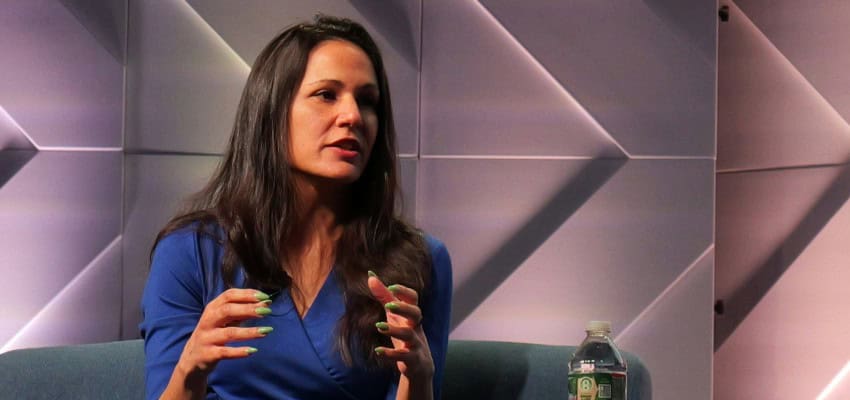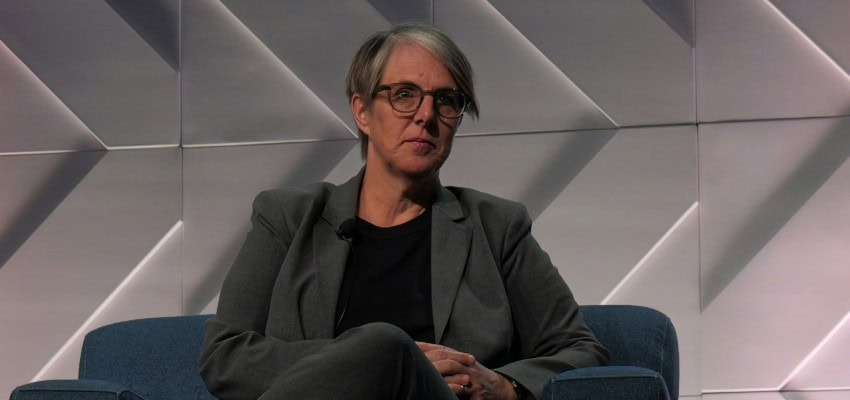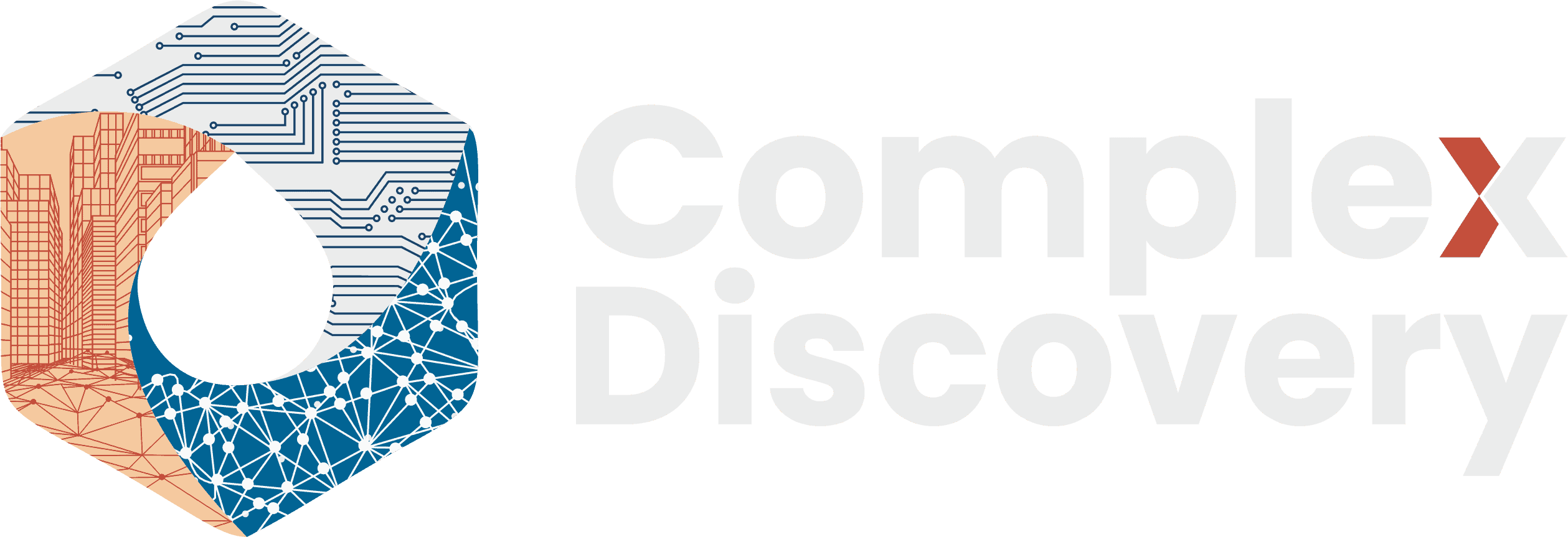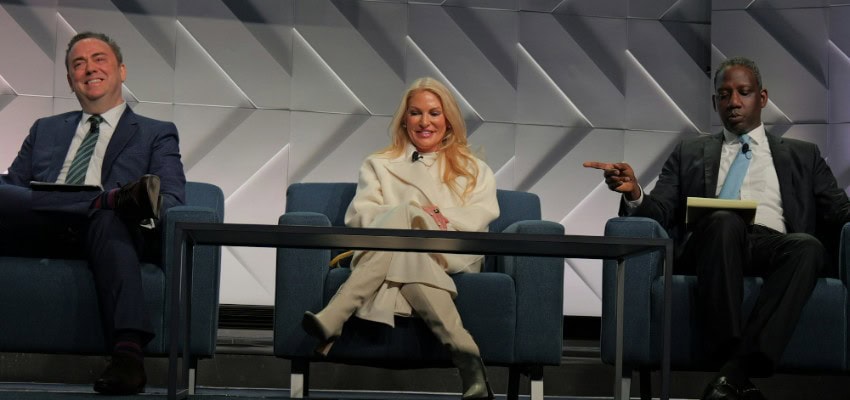Editor’s Note: Courts are sending a clear message: technical fluency is no longer optional in the world of modern discovery. At Legalweek 2025, a panel of esteemed judges signaled a rising judicial expectation for legal professionals to understand—and competently manage—the technological realities of eDiscovery, from AI-assisted review to hyperlink production in cloud-based environments. This article distills vital insights from that session, underscoring a pivotal shift: competence now demands interdisciplinary expertise. For cybersecurity, information governance, and eDiscovery leaders, the implications are profound and immediate.
Content Assessment: Legalweek 2025: Judges Signal New Competency Standards in AI-Era Discovery
Information - 93%
Insight - 92%
Relevance - 94%
Objectivity - 94%
Authority - 95%
94%
Excellent
A short percentage-based assessment of the qualitative benefit expressed as a percentage of positive reception of the recent article from ComplexDiscovery OÜ titled, "Legalweek 2025: Judges Signal New Competency Standards in AI-Era Discovery."
Industry News – Event Beat
Legalweek 2025: Judges Signal New Competency Standards in AI-Era Discovery
ComplexDiscovery Staff
NEW YORK — “Avoidable ignorance” is no longer a viable defense in federal litigation discovery. That was the unmistakable message from a distinguished judicial panel at Legalweek 2025, where sitting and retired judges articulated heightened expectations for legal professionals navigating increasingly complex data environments shaped by artificial intelligence, cloud platforms, and evolving privacy considerations.
The conference session, “View from the Bench: Decoding the Ethics and Discovery Rules in the World of AI, Cybersecurity, and the Data Deluge,” brought together federal magistrate judges and discovery experts to dissect how courts are interpreting discovery obligations amid rapidly evolving technological landscapes. The consensus was clear: the gap between technical capability and legal practice is narrowing, with significant implications for case outcomes, professional responsibilities, and judicial patience.
During panel discussions, Chief U.S. Magistrate Judge Willie J. Epps, Jr. of the Western District of Missouri observed that the shift extends beyond tools to fundamental competency requirements. He noted that while the rules haven’t changed dramatically, the technological context in which they operate has fundamentally transformed. Counsel unable to meaningfully engage with these realities find themselves increasingly disadvantaged before the bench.
The panel, moderated by Patrick Oot, Partner at Shook Hardy and a Chambers-ranked litigator in data and discovery strategies, assembled an exceptional cross-section of judicial perspectives. Alongside Judge Epps were U.S. Magistrate Judges Allison Goddard (Southern District of California) and Rukhsanah Singh (District of New Jersey), complemented by retired Magistrate Judges Andrew Peck and Kimberly Priest Johnson, now with DLA Piper and Shook Hardy, respectively.
The Hyperlink Frontier: When Connection Creates Obligation
Among the most contentious topics addressed was the emerging battleground of hyperlinked documents in discovery – a friction point highlighted in several recent decisions, including StubHub Refund Litigation and ongoing proceedings against Uber Technologies. Courts across jurisdictions have reached divergent conclusions on whether hyperlinked content falls within production obligations, revealing a critical gap between traditional discovery frameworks and cloud-native document architectures.
Judge Goddard emphasized that the issue extends beyond whether hyperlinks theoretically create discovery obligations to whether the technical infrastructure allows for reasonable production without disproportionate burden. She stressed that parties must be prepared to substantiate technical limitations rather than merely assert them.
Judge Singh concurred, noting the problematic trend of protocol language drafted by counsel who haven’t thoroughly consulted IT stakeholders about technical feasibility. This disconnect between legal expectations and operational reality generates unnecessary disputes and delays that undermine efficient case management.
The hyperlink debate exemplifies a broader shift in judicial thinking: discovery obligations are increasingly viewed through the lens of technical capability rather than traditional legal constructs alone. As enterprise systems evolve toward integrated platforms where documents exist as components within larger ecosystems rather than discrete files, courts are reassessing what constitutes reasonable accessibility and proportional effort.

Hon. Rukhsanah Singh
Protocol Design: The Flexibility Imperative
Electronic discovery protocols have evolved considerably since their introduction, and not always beneficially. Panel members expressed concern over the trend toward increasingly elaborate protocols that attempt to anticipate every contingency at the outset of litigation – often without sufficient technical input or flexibility mechanisms.
Retired Magistrate Judge Andrew Peck, a longtime advocate for proportionality in discovery, observed that the most problematic protocols are those drafted as rigid frameworks rather than adaptable roadmaps. When protocols become too prescriptive too early, they can actually obstruct the very efficiency they aim to promote, creating procedural obstacles that delay substantive resolution.
The panel highlighted several best practices for protocol development. These included engaging technical stakeholders during initial drafting stages, building in explicit modification mechanisms that don’t require formal court intervention, focusing on production formats and metadata fields rather than prescribing specific technological approaches, and establishing incremental review milestones rather than comprehensive production deadlines.
Judge Epps emphasized that judges are increasingly receptive to iterative approaches, where parties revise agreements as technological realities emerge during the discovery process. This flexibility aligns with Rule 1 of the Federal Rules of Civil Procedure, which prioritizes just, speedy, and inexpensive resolution – a principle that sometimes requires mid-course adjustments as cases evolve.
The panel also addressed whether ESI protocols should carry the force of court orders, noting that while enforceable orders can promote compliance, they also introduce sanction risks under Rule 37(b) when technical assumptions prove incorrect. Several judges suggested a hybrid approach: core protocol elements as enforceable requirements, with technical implementation details as guidance that can evolve without formal amendment.
Relevance Redactions: A Shifting Landscape
The long-standing prohibition against redacting non-privileged but purportedly irrelevant content is showing signs of erosion. The judicial panel indicated that targeted, well-justified redactions for commercially sensitive information are gaining selective approval in federal courts, provided they don’t impair contextual understanding or significantly delay production.
Judge Johnson explained that the changing landscape doesn’t reflect a shift in the presumption against relevance redactions but rather a recognition that certain categories of sensitive information – such as competitor pricing, technical specifications, and personal identifiers beyond those covered by protective orders – may warrant limited redaction. She noted that transparency and cost absorption remain essential prerequisites for courts to consider such approaches.
However, the panel uniformly cautioned against overreliance on relevance redactions, noting that courts remain deeply skeptical of self-help approaches implemented without prior disclosure or agreement. Judge Singh emphasized that the intent behind redactions often influences judicial responses. Courts view targeted redactions to protect legitimately sensitive information differently than systematic redactions that appear designed to obstruct comprehensive review.
For information governance professionals, this evolution signals the importance of developing defensible, consistent classification schemes for sensitive data types that may warrant redaction consideration. The panel suggested that parties who can demonstrate organizational data classification standards that predate litigation are better positioned to justify relevance redactions when necessary.

Hon. Andrew Peck (Ret.)
Privilege Management: From Afterthought to Architecture
Privilege review and logging practices drew significant attention during the panel, with judges expressing frustration over common deficiencies that generate avoidable disputes. While traditional narrative logs remain standard in many jurisdictions, the panel noted growing acceptance of metadata-based approaches, especially when paired with AI-assisted review workflows that can improve consistency and completeness.
Judge Epps noted that privilege logging is often treated as an afterthought when it should function as an integrated component of discovery architecture from day one. Parties that approach privilege as a strategic process rather than a compliance checkbox tend to avoid the most common pitfalls that lead to extended disputes and judicial intervention.
The importance of Federal Rule of Evidence 502(d) orders was repeatedly highlighted, not merely as protection against inadvertent waiver but as evidence of proactive planning. Courts increasingly view 502(d) provisions as baseline requirements rather than optional safeguards, with judges more inclined to show leniency when privilege mistakes occur within structured frameworks that demonstrate good-faith efforts toward compliance.
Several judges emphasized that privilege processes must evolve alongside AI-assisted review technologies, noting that categorical approaches can significantly reduce costs while improving clarity when properly implemented. Judge Goddard observed that courts are increasingly receptive to sampling-based verification of privilege decisions, particularly when parties can demonstrate robust quality control measures throughout the review process.
The panel also addressed common pitfalls in privilege management. These included the overdesignation of marginally privileged materials, insufficient preparation of privilege logs until after disputes arise, failure to distinguish between true privilege claims and mere confidentiality concerns, inconsistent application of privilege criteria across review teams, and delayed identification of potentially privileged content that creates cascading workflow problems.
For eDiscovery professionals, the message was clear: privilege workflows deserve earlier and more strategic attention, with clear taxonomies, consistent criteria, and quality control measures established before review begins rather than reconstructed afterward when problems emerge.
AI-Assisted Review: Judicial Expectations
While predictive coding and technology-assisted review (TAR) have gained widespread acceptance, the panel indicated that judicial expectations continue to evolve regarding transparency, validation, and expertise requirements. Judges are increasingly sophisticated about AI capabilities and limitations, expecting counsel to demonstrate similar fluency in their approaches and justifications.
Judge Peck, who authored influential early decisions on predictive coding, noted that courts have moved beyond debates about whether AI tools are permissible to more nuanced questions about implementation methodologies. Courts now expect counsel to understand and explain their methodologies rather than merely delegating technical decisions to vendors without meaningful oversight.
The panel highlighted several emerging standards for AI-assisted review. These included disclosure of general methodology without revealing proprietary algorithms, statistical validation of results rather than process attestations, a clear delineation between human and machine decisions, documentation of training approaches for supervised learning systems, and transparent handling of edge cases and low-confidence predictions that require additional scrutiny.
Judge Singh emphasized that courts don’t require perfection in AI-assisted review but do expect informed implementation. The central question isn’t whether the technology is flawless but whether counsel understands its capabilities and limitations well enough to make sound judgments about its application to specific discovery challenges.
For cybersecurity professionals, the increased reliance on AI-assisted review tools introduces new concerns about data protection, algorithm integrity, and audit capabilities. The panel noted that courts are beginning to inquire about security measures surrounding sensitive data used in AI training and decision processes, suggesting a convergence of discovery and cybersecurity considerations that requires integrated expertise.

Hon. Allison Goddard
Competence as the Common Thread
Across every topic addressed, from hyperlink production to privilege logging, the panel consistently returned to a foundational principle: legal teams must demonstrate technical competence, both in understanding the tools they deploy and in managing discovery obligations effectively.
Judge Johnson observed that courts aren’t calling for perfection but for preparation. Judges recognize that technology evolves rapidly, but they’re less tolerant of avoidable mistakes that stem from unfamiliarity with basic technical concepts that should inform discovery planning and execution.
This emphasis on competence extends beyond individual attorneys to encompass organizational readiness. The panel noted that courts increasingly expect coordination between legal and technical stakeholders, with discovery strategies that reflect input from information governance, cybersecurity, and IT architecture perspectives rather than legal considerations alone.
For information governance leaders, this evolution underscores the importance of early involvement in litigation readiness planning, including ESI protocol development and privilege architecture. For cybersecurity professionals, increased data breach risks and privacy constraints are creating new pressures on what can and should be redacted or withheld. And for eDiscovery specialists, expectations are rising not just for efficiency but for fluency in how AI, search tools, and data systems interact within complex enterprise environments.
Implications for Practice
The judicial panel’s insights carry significant implications across the discovery ecosystem. For legal teams, technical competence has evolved from an optional enhancement to an essential component of effective advocacy. Early involvement of technical stakeholders in protocol development prevents downstream disputes that delay resolution and increase costs. Transparent communication about technical limitations builds credibility with courts that increasingly value candor about capabilities. Flexibility in discovery approaches demonstrates Rule 1 compliance in ways that rigid adherence to outdated methodologies cannot achieve.
For information governance professionals, pre-litigation classification schemas strengthen positions on redaction and privilege by demonstrating consistent organizational approaches rather than litigation-driven strategies. Documented retention policies influence proportionality determinations by clarifying what data exists and how accessible it remains. Proactive hyperlink management strategies mitigate production complications that arise from interconnected document environments. Cross-functional communication channels facilitate faster discovery responses when litigation emerges.
For cybersecurity experts, privacy considerations increasingly influence discovery scope determinations as courts balance disclosure obligations against legitimate protection needs. Security measures for AI systems may become discovery discussion points as courts evaluate the trustworthiness of technology-assisted processes. Breach notification requirements intersect with litigation hold obligations in ways that require coordinated response planning. Data minimization strategies can reduce discovery exposure while simultaneously advancing security objectives.
For eDiscovery specialists, AI implementation requires deeper technical understanding rather than just operational proficiency with vendor platforms. Statistical validation skills grow more valuable as technology reliance increases and courts expect meaningful quality verification. Cross-platform integration capabilities bridge enterprise system complexities that impede comprehensive discovery. Metadata expertise becomes critical for hyperlink production decisions that rest on technical infrastructure realities.

Hon. Kimberly Priest Johnson (Ret.)
The Path Forward
As the legal profession navigates increasingly complex data landscapes, the distinction between legal and technical expertise continues to blur. The judicial panel at Legalweek 2025 didn’t establish new rules but illuminated how existing frameworks are being reinterpreted through technological lenses that reflect evolving enterprise realities.
Moderator Patrick Oot concluded that courts aren’t asking for technological perfection but for informed engagement with the realities of modern information systems. The gap between technical capability and legal practice is narrowing, and professionals who bridge both worlds will increasingly shape litigation outcomes in ways that traditional legal expertise alone cannot achieve.
In closing, Judge Epps returned to the central theme that resonated throughout the discussion: avoidable ignorance about technical realities is no longer a viable position in federal litigation. As discovery grows more complex, the professionals who combine legal expertise with technical understanding are the ones who will prevail – not just in motion practice but in meaningful case resolution that serves justice efficiently.
For a profession navigating rapid technological transformation, that message from the bench couldn’t be clearer: competence is no longer measured solely by legal knowledge but by the ability to apply that knowledge effectively within evolving technical ecosystems. The future belongs to those who can speak both languages fluently.
News Sources
- Epps, W. J., Goddard, A., Singh, R., Peck, A., & Johnson, K. P. (2025, March 26). View from the bench: Decoding the ethics and discovery rules in the world of AI, cybersecurity, and the data deluge [Conference panel]. Legalweek Conference, New York Hilton Midtown, New York, NY, United States.
- Legalweek New York 2025
Assisted by GAI and LLM Technologies
Additional Reading
- Fluid Dynamics: ALM Report Reveals Evolving Legal Landscape Amid Record Profits and Technological Disruption
- Rob Lowe at Legalweek: Reinvention Is the Real Currency
- SXSW EDU | Embracing the Experimental Mindset: How Curiosity Fuels Learning and Growth
Source: ComplexDiscovery OÜ

Hon. Willie Epps, Jr.

























